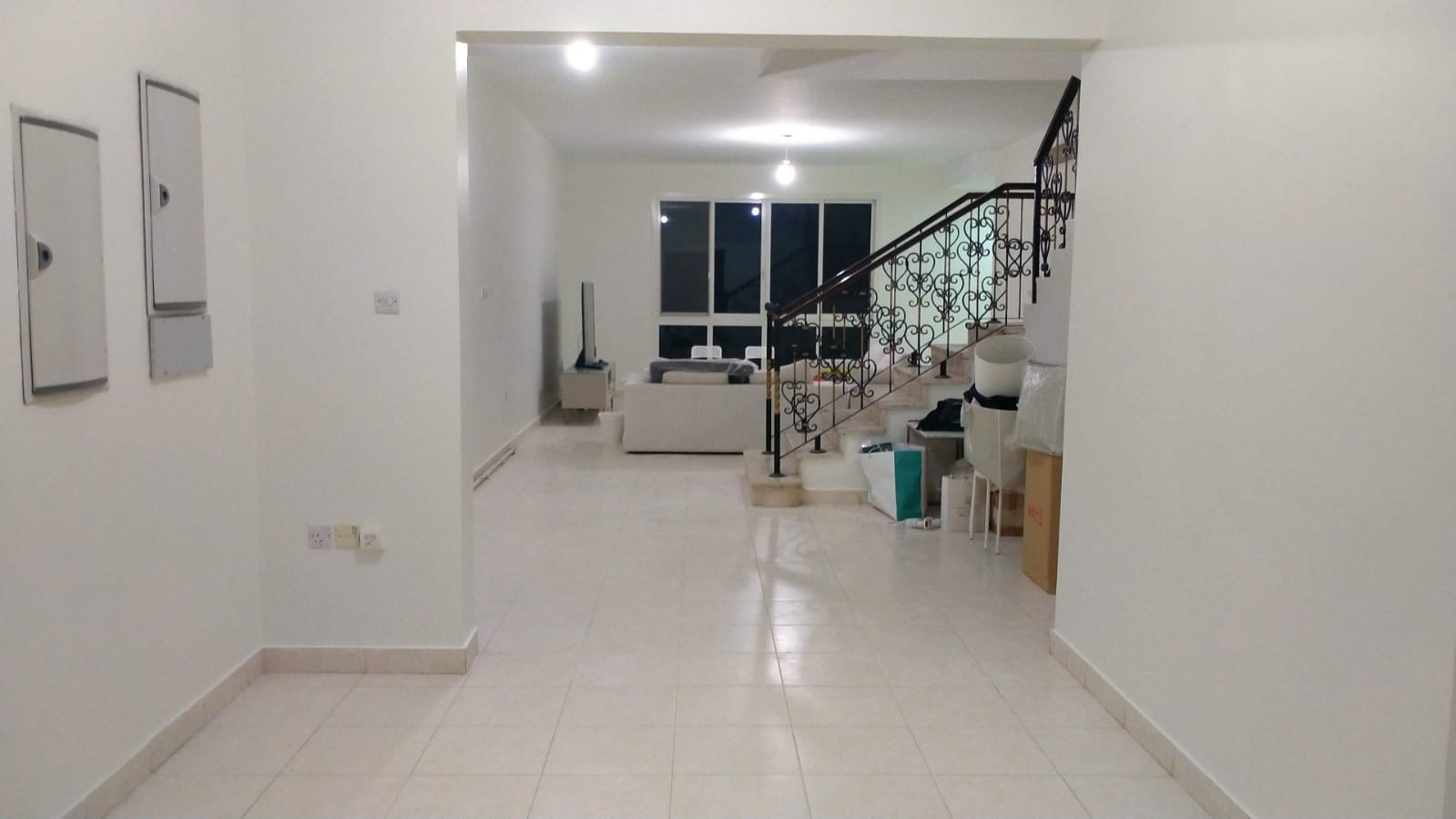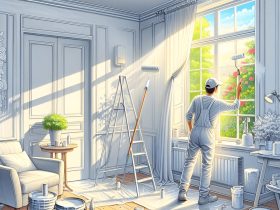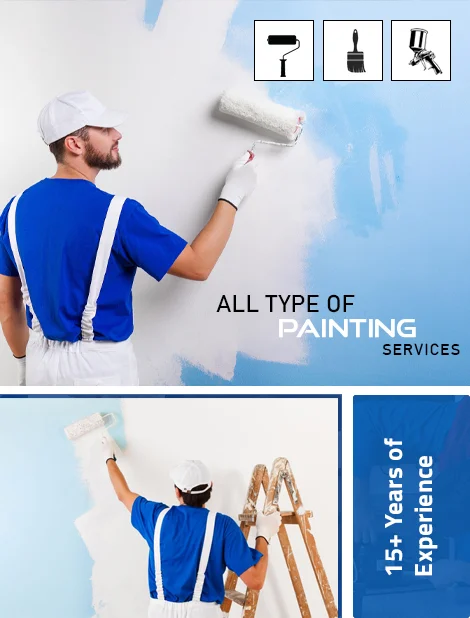 Wall painting mixes art, culture, and personal expression in an ancient practice with significant change throughout the years. This creative effort transforms the blank canvas of a wall into a story, a message, or a strikingly beautiful scene. The long history of wall painting, the numerous techniques applied by painters, and how modern trends influence this timeless art medium are investigated in this essay.
Wall painting mixes art, culture, and personal expression in an ancient practice with significant change throughout the years. This creative effort transforms the blank canvas of a wall into a story, a message, or a strikingly beautiful scene. The long history of wall painting, the numerous techniques applied by painters, and how modern trends influence this timeless art medium are investigated in this essay.
Travel Through Time
Medieval Origins
Dubai wall paint services date its origins to prehistoric times, with early examples found in the caverns of Lascaux, France, and Altamira, Spain. Made more than 17,000 years ago, these cave paintings use natural colors including ochre, charcoal, and hematite to portray animals, human figures, and abstract symbols. These prehistoric paintings highlight the natural human need to record and depict life using art, most likely for ceremonial uses, hunting magic, and communication.
Archaeological Civilizations
Wall painting developed in complexity as communities expanded. In ancient Egypt, wall paintings adorning tombs portrayed images from daily life, religious rituals, and the voyage to the next world. These paintings, created with mineral-based pigments, have kept their vibrant colors for millennia, so emphasizing the Egyptians’ capacity for strong craftsmanship.
Wall paintings from Greece and Rome advanced the art form. Greek artists created bright, long-lasting paintings by perfecting the fresco technique—applying pigments to wet cement. Particularly at Pompeii, Roman wall paintings demonstrated a great enthusiasm for realism, perspective, and depth, so depicting mythological topics, landscapes, and daily life.
The Renaissance
The Renaissance was a golden age for wall painting. Michelangelo, Leonardo da Vinci, and Raphael created among the most identifiable frescoes and murals in history. Michelangelo’s Sistine Chapel ceiling and Raphael’s School of Athens are masterworks fusing religious notions with humanistic concepts. These pieces display the artists’ technical expertise and creative vision by means of wall painting investigating challenging themes and stories.
Modern and contemporary advances
Wall painting evolved in the 20th century inspired by movements including Abstract Expressionism, Surrealism, and Pop Art. By muralists like Diego Rivera, José Clemente Orozco, and David Siqueiros, large-scale paintings tackling social and political issues became strong visual storytelling on public walls. Modern street painters such as Banksy, Shepard Fairey, and JR have altered wall painting by using urban environments to start conversation on modern themes.
Techniques and approaches of wall painting
There is a wide range of techniques in wall painting, with particular advantages and challenges for every. The most well-known ones are these:
Fresco.
Laying color over freshly produced lime plaster is known as fresco painting. Widely applied during the Renaissance, this technique produces a chemical bond between the pigment and plaster, therefore producing strong and long-lasting paintings. Fresco demands precise preparation and fast execution since the artist has to finish every portion before the plaster sets. Among the famous frescoes are Michelangelo and Raphael’s paintings as well as Giotto’s Scrovegni Chapel in Padua.
Semecko
Italian meaning “dry,” secco paints on dry plaster using pigments mixed in a binding agent like egg tempera or oil, unlike fresco. This technique gives more detail and freedom since painters can work on smaller sections free from the time limits of wet plaster. Still, secco paintings are less strong than frescoes and more likely to fade with time.
Made straight on walls or ceilings using acrylics, oils, and spray paint, murals are large-scale artworks. Modern murals include mixed medium and experimental techniques to help artists explore new textures and effects. Serving both ornamental and communication purposes, murals exist in homes, businesses, and public spaces.
French meaning “deceive the eye, trompe l’oeil is a method that creates optical illusions, hence giving two-dimensional images a three-dimensional look. Artists carefully consider perspective, shade, and detail to imitate architectural elements, objects, and situations, so giving the work life and reality. This approach has been used to increase the visual appeal of exteriors as well as inside environments since ancient times.
Graffiti and Street Art
Rising from urban subcultures, street art and graffiti have come to be approved as legitimate creative media. Often combining spray paint, stencils, and unique tools, these methods create striking and controversial artwork on public walls and buildings. Street art especially has become a global phenomenon as artists like Banksy, Shepard Fairey, and JR challenge accepted wisdom of art, beautify cities, and draw attention to social and political issues.
Painting walls: effects related to personal space
Wall painting allows people to express their own thoughts and personalize their houses. Ornamental paintings and custom murals provide houses warmth, color, and charm. Whether in a child’s bedroom with interesting characters, a sophisticated dining room with a classic scenario, or a living room with abstract designs, wall painting provides any property a unique and personal touch.
Public Art and Group Projects
Urban renewal in public areas and community involvement depend on wall painting absolutely. Often featuring local artists and citizens, public art projects transform neglected areas into dynamic cultural symbols. These projects generate visitors and economic growth as well as social togetherness, pride, and identification. Cities like Philadelphia with its well-known Mural Arts Program and Rio de Janeiro with its Favela Painting project exemplify how wall painting could enhance a neighborhood.
Commentary on social and political issues
Wall painting gives considerable force for social and political discourse. Public walls let artists draw attention to pressing issues including cultural identity, social injustice, and climate change, therefore motivating activity and launching conversations. Strong political messages contained in murals by artists like Diego Rivera and José Clemente Orozco still motivate fresh muralists to tackle modern concerns.
Especially street art has developed as a platform for impoverished people’s voice and protest. Street artists question power systems, demand change, and take back public spaces by means of their anonymity and accessibility. Works include Banksy’s politically charged murals and Shepard Fairey’s well-known “Hope” poster highlight how much wall painting shapes popular opinion.
Uses for Wall Painting Now
By using current technologies, subjects, and techniques, wall painting keeps evolving in the scene of modern art. From large public initiatives to private gallery exhibits, wall painting covers a wide range of creative methods and techniques.
Public Projects and Art for Local Communities
Wall painting is now a quite useful tool for community involvement and urban renewal. Public art projects usually involve local artists and residents to transform vacant spaces into vibrant cultural symbols. These projects generate visitors and economic growth as well as social togetherness, pride, and identification. Wall painting may enhance a city like Rio de Janeiro with its Favela Painting initiative and Philadelphia with its well-known Mural Arts Program.
Technology and ingenuity
New wall painting possibilities have come from technological advances. Digital projections, interactive elements, and augmented reality (AR) are increasingly included into murals to give visitors dynamic and immersive experiences. Artists like Refik Anadol and teamLab challenge traditional wall painting by combining current technologies with the physical and digital worlds.
For example, AR murals reveal hidden layers, animations, and stories allowing guests to interact with the artwork using their iPhones. This combination of technology and art not only enhances the visual attractiveness but also invites spectators in novel ways, therefore improving the interactability and accessibility of art.
Ecological and Sustainable Techniques
Many wall painting enterprises and artists adopting sustainable methods are responding to mounting environmental problems. This covers employing recycled materials in their work and ecologically friendly paints like low-VOC (volatile organic compounds) and non-toxic hues. Apart from reducing environmental effect, sustainable wall painting use art to spread awareness of ecological issues.
End
Painting services in Dubai remain a vital and interesting way of artistic expression given their long past and several techniques. Its flexibility to adjust to societal changes, welcome new technologies, and address contemporary issues shows its ongoing relevance and changing power.
As we keep researching and creating within this art form, wall painting will undoubtedly remain a powerful instrument for social reform, cultural preservation, and narrative telling. Whether through the ancient frescoes of Italy, the bright murals of Latin America, or the controversial street art of metropolitan centers, wall painting captures the essence of human invention and resiliency—our common history and imagined future.
Rich in history and many possibilities, wall painting still moves and inspires people. Its capacity to inform, beautify, and challenge assures us that it will always be a major and popular creative tool for next generations. Wall painting gives our surroundings—that of homes, public buildings, or metropolitan streets—color, imagination, and life; hence, it transforms the surroundings and makes the earth more vibrant and important.








Leave a Reply